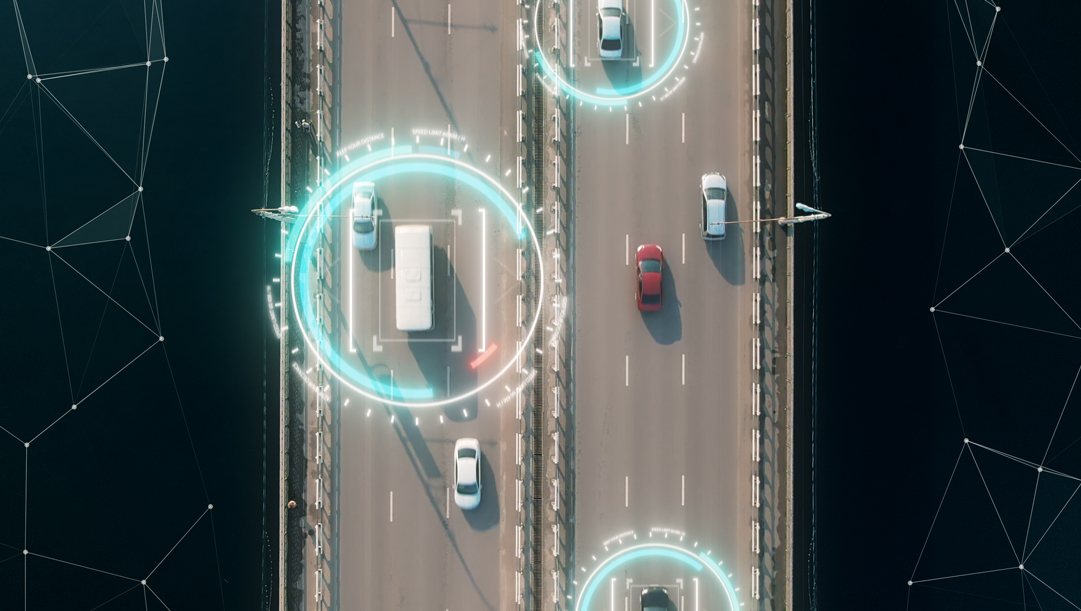Smart Road Technology: Digital Highways Of The Future
The road is often overlooked when discussing the future development and digital transformation of the modern transport infrastructure. Afterall, we have all heard of connected cars, self-driving cars, gps navigation, route optimization apps and ride-hailing services. You would be forgiven for thinking how the common road fits into this digital revolution, as it turns out, the road itself can be a platform for an amazing array of innovations.
Roads can be upgraded with communication, lighting and power transmission technologies that can support sustainability, improve safety and efficiency which in turn will help transform the driving experience.
What Is Smart Road Technology?
Smart roads use Internet of Things (IoT) devices to make driving safer, more efficient, and in line with government objectives, greener. Smart roads combine physical infrastructures such as sensors and solar panels with software infrastructure like AI and big data.
Smart road technologies are embedded in roads and can improve visibility, generate energy, communicate with autonomous and connected vehicles, monitor road conditions, and more.
Here are a few examples:
- IoT connectivity: Cities can connect roads to IoT devices, and gather traffic and weather data. This type of connectivity can improve safety, traffic management, and energy efficiency.
- Traffic management networks: For improving safety and reducing congestion. The network uses speed cameras to provide warning signs for hazardous conditions, and sends automated traffic diversion signals that control traffic.
- Traffic lights optimization: Systems that use data from closed-circuit television (CCTV) cameras or smart vehicles to optimize traffic lights and update commuters on jams or bottlenecks.
Most transport-related smart tech focus on individual vehicles, although there have been major advances in technological solutions for smart infrastructure at scale. Worldwide experiments in Vehicle to Infrastructure (V2I), Vehicle to Vehicle (V2V) and Vehicle to Pedestrian (V2P) technologies will make urban transport smarter in the future.
Digital Reality: 7 Smart Road technologies
- Solar powered roadways
Photovoltaic cells are embedded within hexagonal panels made of tempered glass, which are used to pave roads. These panels contain LEDs, microprocessors, snow-melting heating devices and inductive charging capability for electric vehicles when driving. Glass is renewable and can be engineered to be stronger than steel, and to allow cars to stop safely even when traveling at high speeds. While this idea has gained widespread support, scalability is a challenge as it remains expensive.
- Smart Roads
Specially engineered roadways fitted with smart features, including sensors that monitor and report changing road conditions, and WiFi transmitters that provide broadband services to vehicles, homes and businesses. The smart road can also charge electric cars as they drive.
- Glow in the dark roads
Glowing markers painted onto existing roadway surfaces use a photo-luminescent powder that absorbs and stores daylight. The 500m long strips glow for 8 hours after dark. This technology is still in the testing phase, and the glow is not yet consistent, but it could be more cost-effective than traditional road lighting technologies.
- Interactive lights
Road lights activated by motion sensors to illuminate a particular section of the road as cars approach. The lights dim once the car passes. Suited for roads with less traffic, interactive lights provide night visibility as needed and reduce energy wastage when there are no cars. One design, developed in Holland, uses the wind generated by passing vehicles to power lights.
- Electric priority lane for charging electric vehicles
Embedded cables generate magnetic fields that charge electric vehicles while driving. A receiver coil in the vehicle picks up electromagnetic oscillations from a transmitter coil embedded in the road and converts them to AC, which can then power the car. Inductive charging technology already exists for static cars, but future wireless technology could charge batteries while in motion, providing distance range solutions for electric vehicles which travel longer journeys.
- Weather detection
Networks of AI-integrated sensors detect weather conditions that impact road safety. Road Weather Information Systems (RWIS) in use today are limited because they only collect data from a small set of weather stations. A larger future network could use automated weather stations to collect atmospheric and weather data and instantly upload it to the cloud. Dynamic temperature-sensitive paint could be used to highlight invisible roadway conditions like black ice.
- Traffic detection
Data that helps travelers plan their routes. Sensors lining highways monitor traffic flow and weight load, warn drivers of traffic jams, and automatically alert the authorities about accidents. Fiber-optic cables embedded in the road detect wear and tear, and communication between vehicles and roads can improve traffic management. For example, rapid flow technologies use artificial intelligence (AI) to manage traffic lights, which respond to each other and to cars. Traditional systems were pre-programmed to optimize flow around peak journey times, new technologies are able to process and optimize flows in real time.
Adopting Smart Road Technology
Many governments and transport authorities understand the value of smart road technologies. However, developing smart city infrastructure at scale can be costly and complex. Leaders can break down smart road projects into phases, starting with low-investment, narrow-scale initiatives that can provide initial value, setting the stage for high-investment and large-scale efforts.
In the early days of motor-powered mobility, cars were available, but there was no suitable road infrastructure; the first private cars were hardly more effective than horse-driven wagons. Gradually, authorities recognized that only a major investment in road infrastructure would help the population reap the benefits of new transport technology.
Similarly, today’s governments and urban transport authorities are beginning to appreciate the importance of smart roads as an essential platform for mobility innovation. Smart roads will power smarter cars, empower drivers, and provide governments with unprecedented visibility and control over the living fabric of motor-based traffic.




